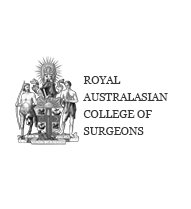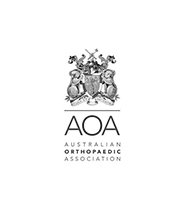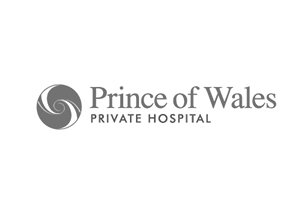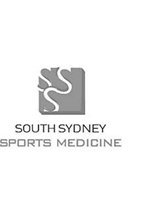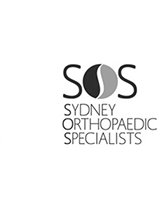Bankart Tear and Repair
The shoulder joint (glenohumeral joint) is a ball and socket joint, where the head of the upper arm bone (humerus) attaches to the shoulder socket (glenoid cavity).
The shoulder socket is shallow and this predisposes to shoulder instability.
The labrum is a cuff of cartilage that encircles the shoulder socket. It helps deepen the socket which improves stability. It also provides attachment for the ligaments from the ball of the humeral head.
If loads placed on the arm exceed the ligament strength, the most common place for a tear is where the labrum attaches to the socket, called a Bankart tear or lesion. A Bankart tear makes the shoulder prone to repeat dislocation in patients under 30 years of age.
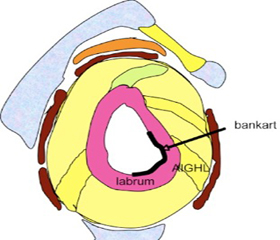
Causes of Bankart tears
The classic anterior Bankart tear occurs when the arm is excessively loaded in the cocking, overarm ball-throwing position, dislocating the shoulder.
How is a Bankart tear diagnosed?
Dr Harper will ask about your medical history and perform a thorough physical examination of your shoulder. [doctor] may also recommend an additional X-ray or an MRI.
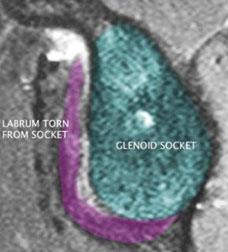
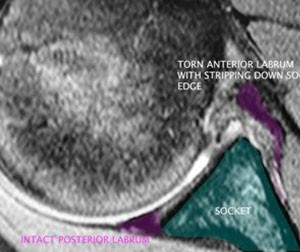
MRI scans showing tear of the glenoid labrum “Bankart tear”
What are the treatment options for a Bankart tear?
Conservative treatment measures for a bankart tear include
- Initial rest and immobilization with a sling
- Physical therapy.
- Long term activity modification: avoiding load in the arm position where the shoulder dislocated.
Bankart repair surgery is indicated for a bankart tear, when conservative treatment measures do not improve the shoulder instability and limited quality of life persists.
Bankart Repair Surgery
Bankart repair is a reliable surgical treatment with good clinical outcome.
It can reduce the rate of recurrent shoulder instability and improve your quality of life.
How is a Bankart Repair Performed?
Bankart surgery can be performed using an open surgical technique or a minimally invasive surgical technique known as arthroscopy. My preferred technique is:
Arthroscopic Bankart Repair Surgery
During an arthroscopic Bankart procedure a few small incisions are made over your shoulder joint.
- An arthroscope, a slender tubular device attached with a light and a small video camera at the end, is inserted through one of the incisions into your shoulder joint.
- The video camera transmits the image of the inside of your shoulder joint onto a television monitor for your surgeon to view.
- Small surgical instruments are placed through the other incisions to define and mobilise the torn labrum.
- Suture anchors are then inserted to reattach the labrum to the glenoid and tension the attached ligaments.
- The incisions are then closed and covered with a bandage.
Arthroscopy causes minimal disruption to the other shoulder structures and does not require division of the anterior shoulder tendon (subscapularis) as with the open technique.
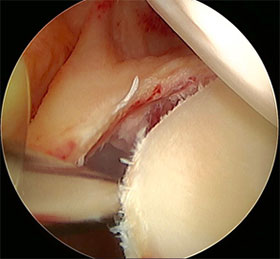
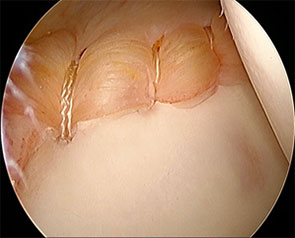
Arthroscopic images showing Bankart tear on left and Bankart repair on right
Post-operative care for Bankart Repair
After your surgery, you will spend about an hour in the recovery room.
- Your arm will be placed in a sling for 6 weeks to restrict the use of your operated shoulder and allow healing.
- You may resume light low-risk activities, like jogging and swimming 10-12 weeks after surgery. Patients are advised to avoid contact sports for 6 months and instability bracing is recommended for the first two seasons on return..
Risks Associated with Bankart Repair Surgery
Bankart repair is a relatively safe procedure, but as with any surgical procedure, potential risks and complications may occur. Some of the potential risks include:
- Infection
- Injury to adjacent nerves or blood vessels
- Stiffness of the joint
- Pain
- Persistent instability
- Need for additional surgeries

